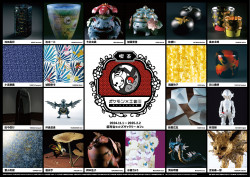
December 16, 2010
Setting the Table
Foreign cooks show the locals how it’s done in a new recipe collection
By Metropolis
Originally published on metropolis.co.jp on December 2010
“Surprisingly, there are many people who want to taste something they haven’t had before.”
So begins the introduction to Foreigner’s Table, a new cookbook that showcases the cuisine of Japan-based expats. To help the locals overcome their reluctance to explore new things, the editors gathered together dozens of foreigners and asked for their can’t-miss recipes. The result is a mouthwatering stew of everything from Israeli hummus to Laotian noodles to North Korean tofu steaks(!). Here’s a taste of what’s cooking. —ST
Jonathan Pates (USA)
Tofu tacos
 Originally from Orlando, Florida, Jonathan came to Japan three years ago to work as a percussionist at Tokyo Disneyland. He now lives in Kawasaki and teaches English. On the weekends, he hangs out with friends in Yoyogi Park or around Shibuya, and often goes to clubs. His favorite food is tonkotsu ramen.
Originally from Orlando, Florida, Jonathan came to Japan three years ago to work as a percussionist at Tokyo Disneyland. He now lives in Kawasaki and teaches English. On the weekends, he hangs out with friends in Yoyogi Park or around Shibuya, and often goes to clubs. His favorite food is tonkotsu ramen.
Jonathan started with traditional Tex-Mex style tacos, using hard shells made from fried tortillas, which are always popular in America. But with the addition of that most Japanese of all ingredients—tofu—he created this all-new hybrid taco! The ground beef and tofu make a wonderful combination, and if you have all the ingredients, this speedy dish will be ready in a flash. You can also include other fillings, like onions, avocado, chorizo or deep-fried fish. Add all your favorite foods and enjoy the party!
Ingredients (makes 6 servings)
- 12 hard taco shells
- 2 tomatoes
- 100-200g ground beef
- Half a block of kinu tofu
- 2-3 hardboiled eggs
- Half a head of lettuce
- Cheddar cheese (to taste)
- Pre-made salsa (to taste)
- 1 package taco seasonings
Directions
1. Cut the tomatoes, tofu, lettuce and hardboiled eggs into a size that’s easy to stuff into the taco shells
2. Sauté the ground beef in coconut oil. When the meat is browned, add taco seasoning and sauté until the meat crumbles into small bits
3. Stuff the fillings into the taco shells, top with as much cheddar cheese and salsa as you like, and you’re done!
Li Lin (China)
Eggplant and miso sauté
 Li Lin comes from a distinguished family in Xi’an. She arrived in Japan in 2008 with plans to attend a Japanese college, and is now studying at a language school while preparing for her entrance exams. She lives in a 2DK in Saitama’s Sakado City and attends ikebana lessons in the neighborhood. She’s very interested in Japanese culture.
Li Lin comes from a distinguished family in Xi’an. She arrived in Japan in 2008 with plans to attend a Japanese college, and is now studying at a language school while preparing for her entrance exams. She lives in a 2DK in Saitama’s Sakado City and attends ikebana lessons in the neighborhood. She’s very interested in Japanese culture.
This dish is a standard of Chinese home cooking, and it packs a triple punch—easy, delicious and fast. Eggplant is believed to help prevent cancer and improve blood circulation, so it’s considered a healthy ingredient and is a staple in Chinese kitchens.
Ingredients (makes 2 servings)
- 150g sliced pork
- 2-3 eggplants
- 1 clove garlic
- 1-2 negi
- 1 pack of ginger
- 1 teaspoon sugar
- A pinch of salt
- 1 teaspoon soy sauce
- 2 tablespoons tian mian jiang (Chinese sweet bean sauce)
- 1 tablespoon sesame oil
- Oil for frying
Directions
1. Cut the eggplants diagonally into 2cm pieces and fry them in the oil
2. Heat the sesame oil in a frying pan, then add the garlic. When the smell becomes stronger, fry the pork at a high temperature until it turns brown. Then add the thinly sliced negi, ginger and eggplant
3. Mix in the sugar, salt, soy sauce and tian mian jiang
4. The dish is finished when all the ingredients are well-combined
Azam (Iran)
Chelo Morg
 Azam came to Japan four years ago to pursue a masters degree at Hitotsubashi University. Her studies focus on the differences between Japanese and Persian—for example, the various honorific titles in the two languages. In addition to teaching Iranian culture via cooking classes to people in her neighborhood, she introduces special products like Persian rugs.
Azam came to Japan four years ago to pursue a masters degree at Hitotsubashi University. Her studies focus on the differences between Japanese and Persian—for example, the various honorific titles in the two languages. In addition to teaching Iranian culture via cooking classes to people in her neighborhood, she introduces special products like Persian rugs.
Because Iran is blessed with a fertile topography and climate, farmers there produce over 60 million metric tons of agricultural products a year. The country is renowned for its dates, saffron and pistachios, as well as several other types of produce. Chelo morg, a chicken and tomato stew, contains dried fruits from this plentiful harvest, and is eaten by families all over Iran. Scoop up a hearty spoonful and serve it on top of rice!
Ingredients (makes 2 servings)
- 200g chicken
- 1 green pepper
- 1-2 carrots
- 1 onion
- About 10 dried sumomo (Japanese plums)
- A little lime juice
- A little turmeric
- 1-1.5 tablespoons tomato paste
- 1 bag of pre-cooked mixed vegetables
- Dried sumomo (or plums) to taste
Directions
1. Sauté the chicken on both sides, then add the green pepper, carrots and onion
2. Add the turmeric and a little salt. After you’ve adjusted the seasoning, add the tomato paste and mix until everything takes on a red color
3. Add enough water to cover the chicken and other ingredients
4. When the water comes to a boil, add the dried sumomo and lime juice. Cook for an additional ten minutes or so on medium heat
5. Top the dish with mixed vegetables
Gambat (Mongolia)
Tsuivan
 A native of Ulan Bator, Gambat came to Japan in 1998 because of his parents’ work. His family settled in Kyushu, and he later moved to Tokyo to attend college. Gambat is currently a sophomore living in Kawasaki, and he also helps spread knowledge about Mongolian culture.
A native of Ulan Bator, Gambat came to Japan in 1998 because of his parents’ work. His family settled in Kyushu, and he later moved to Tokyo to attend college. Gambat is currently a sophomore living in Kawasaki, and he also helps spread knowledge about Mongolian culture.
Tsuivan is a noodle dish that resembles Japanese yaki-udon. In Mongolia, it’s often the center of a happy circle of family members. Usually the noodles are made fresh especially for the occasion, but for this recipe, we’re using store-bought ones. Mutton is an essential ingredient in Mongolian cooking, so it shows up in many recipes. The meat is usually used in tsuivan as well, but because it can be difficult to find in Japan, we’ve substituted beef. Oily food is popular in Mongolia because of the dry climate.
Ingredients (makes 2 servings)
- 150g ground beef
- 2 onions
- 1 clove garlic
- 2 carrots
- 3 potatoes
- 1-2 negi
- Half a head of cabbage
- A pinch of rock salt
- A little soy sauce
- 1 package udon noodles
Directions
1. Sauté the onion, beef and garlic in a frying pan, then add the carrots, potatoes and cabbage
2. After boiling the udon, mix with the ingredients from step 1
3. Add the negi, rock salt and soy sauce. Mix together lightly
Yabe Dina Miharesu (Philippines)
Mechado
 Originally from Mindanao, Yabe came to Japan 15 years ago. She’s the mother of four energetic sons, so when planning her menus, she always considers her growing children’s hearty appetites. She leads a busy but fun life.
Originally from Mindanao, Yabe came to Japan 15 years ago. She’s the mother of four energetic sons, so when planning her menus, she always considers her growing children’s hearty appetites. She leads a busy but fun life.
Philippine cooking has been influenced by both Spain and China, but it retains its own distinct and gentle flavors. There are very few really spicy dishes—a clear and refreshing citrus taste is common. Both Japan and the Philippines are island countries, and they both use rice as a staple food. Traditional Philippine cuisine also includes lots of grilled seafood, so it follows that the cooking is easily appreciated by the Japanese palate.
Ingredients (makes 4 servings)
- 200g chicken
- 10 shrimp
- 2 onions, chopped
- 2 potatoes, chopped
- 1 carrot, chopped
- 5-6 shishito peppers
- 1 lemon
- 1 tomato, chopped
- 50cc vinegar
- Bouillon and fish sauce to taste
- Oil for frying
Directions
1. Cut chicken into bite-sized pieces
2. Put water and bouillon into a pot and heat. Add the chicken. When chicken is cooked through, add the vinegar and cook over low heat
3. Add carrot, onion and tomato and cook for a few more minutes
4. Briefly fry the potatoes in oil and add them to the pot
5. When potatoes soften, add salt, pepper and fish sauce to taste
 Foreigner’s Table (Raichosha, 2010) is available for ¥1,575 at bookstores throughout Japan. Excerpts reprinted with the kind permission of the publisher. www.raichosha.co.jp
Foreigner’s Table (Raichosha, 2010) is available for ¥1,575 at bookstores throughout Japan. Excerpts reprinted with the kind permission of the publisher. www.raichosha.co.jp







